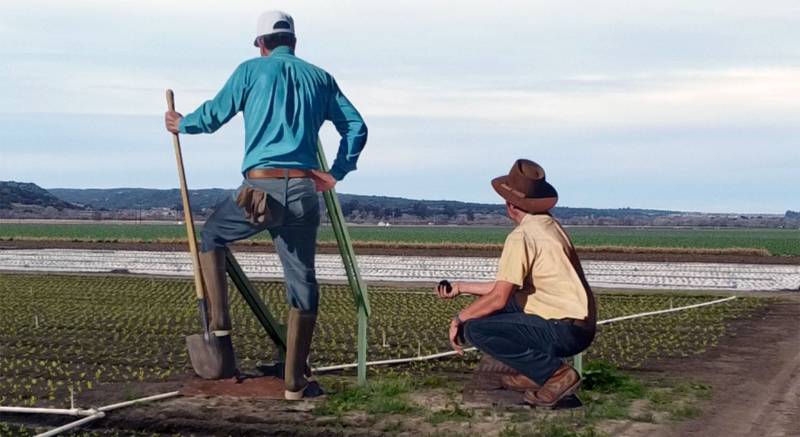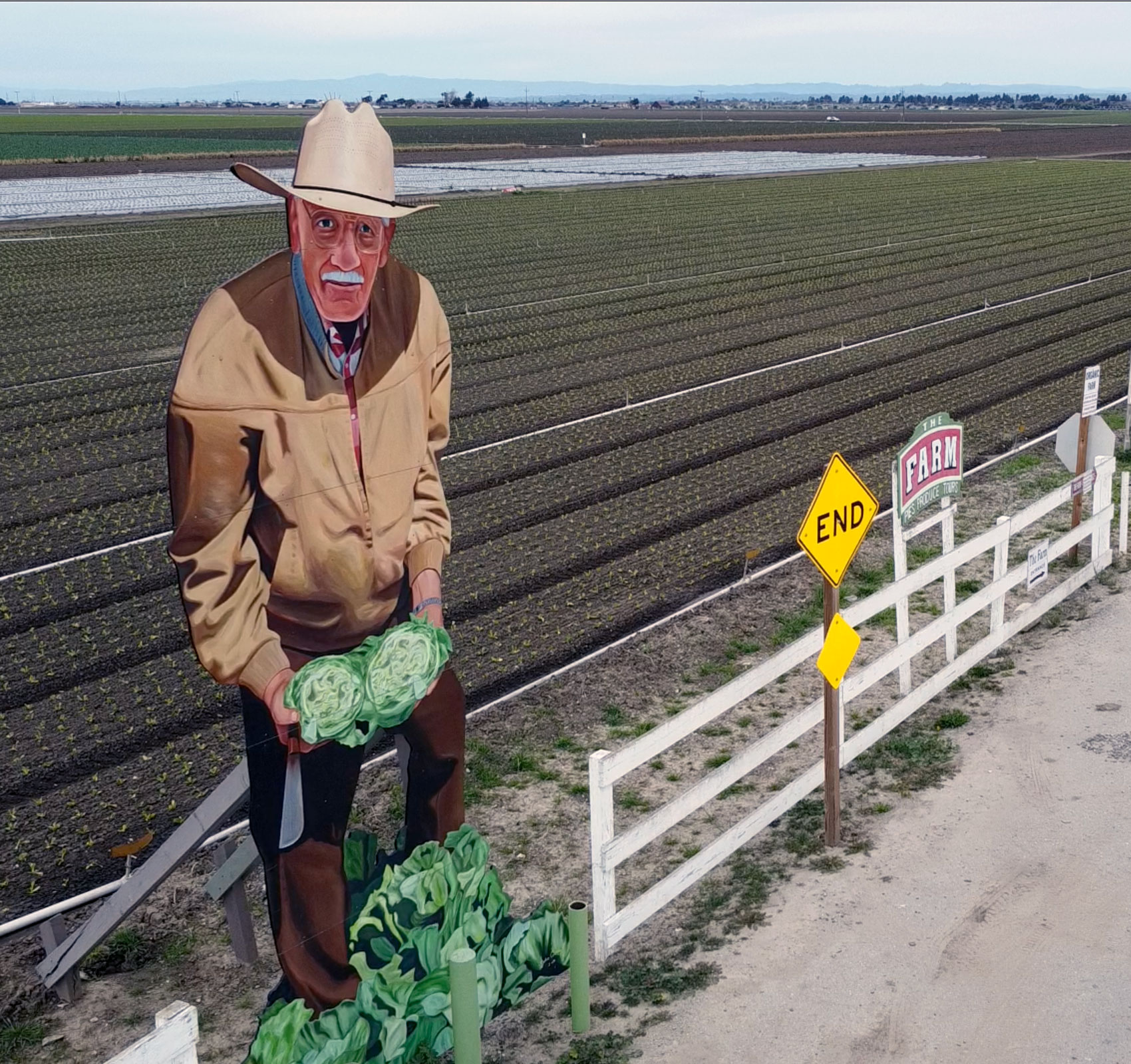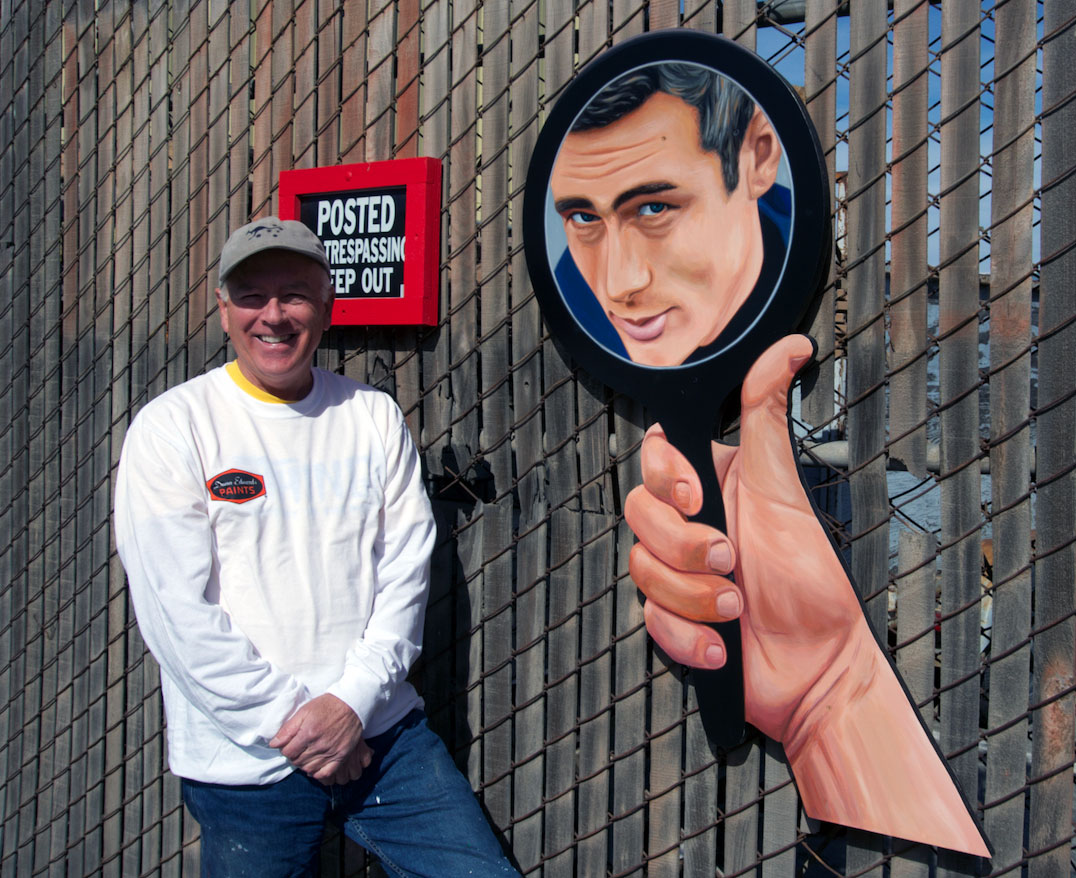California’s Central Valley boasts some beautiful landscapes, often missed by drivers bombing down I-5 between Northern and Southern California. But if you’ve ever driven to, say, Salinas or Carmel, you may have noticed some giant art along the way. Scattered throughout the area, off many different roads, are hundreds of brightly colored plywood cutout scenes of Americana.
Bay Curious listener Nick Loey drives these roads regularly and has often wondered about these giant art pieces — some of which are over 20 feet tall — sticking up in random fields in remote locations.
“They have a very distinct style, sort of like pop art, that depict what seem to be farmworkers doing jobs in the field or sort of just posing with their pets or farm equipment,” Loey said. He wants to know “whether or not there’s some story behind that set of art. Is it an exposition for a specific artist? Is it a history piece that you’re supposed to admire and enjoy as you’re driving down the freeway, or is it something more?”
Answering Nick’s question took us into artist studios and farmworker communities. And like so many things, this art means different things depending on who you ask.
“Farmer & Irrigator”
If you’ve never seen these art pieces before, I can’t stress to you how large they are when you get up close to them. But driving by, the static cutouts almost feel interactive. From far away, it can look like figures crouched in the field or standing, surveying the day’s work. It’s only as drivers get closer that they realize the figures aren’t real people at all.


